Yeah, More Plants
We ended up spending most of today in traffic, so nothing got done on the irrigation. Oh, well. Here are some more plant photos for you.
Here's the strip along the driveway, more planted up and growing in nicely. I added little elfin thyme plants (I had extras from the front walk), a bunch of Armeria maritima (pink sea thrift), and some other random plants in there that I don't recall the names of, but they all get to be about 12 inches tall and can stand direct afternoon sun and alkaline soil. The sweet peas are starting to grow, and next weekend I think I will get them a trellis to grow on. The large lettucy thing in the center of the photo is Silene asterias, and it seems to be doing OK, despite having been completely wilted to the ground when we got home Friday evening. A little water revived it.
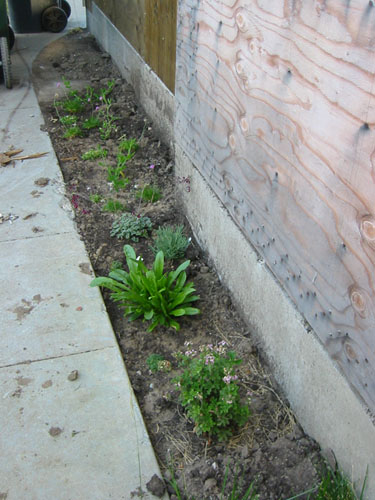
I planted this cobweb thistle in my California natives garden, and it has grown large and lovely. Lots of people think it is a weed, which is pretty funny, because of course it is mostly a weed, but I planted it and I love its purple flowers, so it's not a weed to me. But I have had to give up on weeding out the Bermuda grass under it, because it has huge spikes all over it.
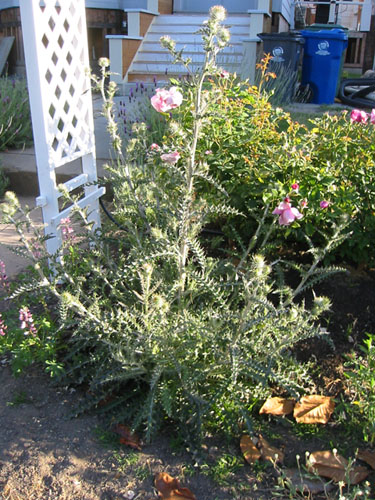
The flower buds are just starting to form. Just you wait: it's going to be amazing.
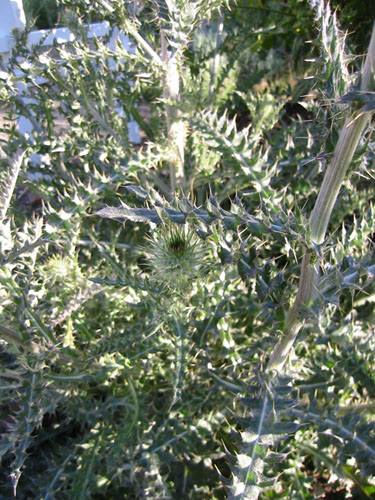
Slowly moving out of bloom is the rose hedge, which has been making me happy for weeks now. I love deadheading the roses, filling my bucket with what looks like pink lettuces. The compost heap looks and smells like a sachet, too. I will miss them when they finish their bloom, though of course they will still be a lovely hedge, and the violets under them will stay in bloom all summer.
Here's David Austin's St. Cecilia, which I chose because I love its light peachy colour and also because Cecilia is my mother's name and St. Cecilia is the patron saint of musicians. It does tend to have a weak neck and bend over under the weight of its flowers, and to blow its petals at the slightest provocation, but one does not plant roses expecting them to be carefree.
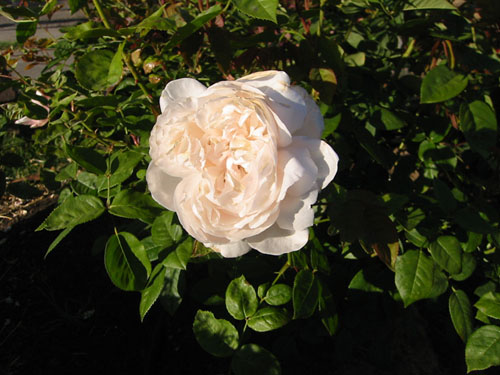
Sceptr'd Isle, which I thought would end up being more open than this, not that I am complaining. I think they look lovely, and they're light enough that they can hold their heads up, which is a big change from some of the David Austins.
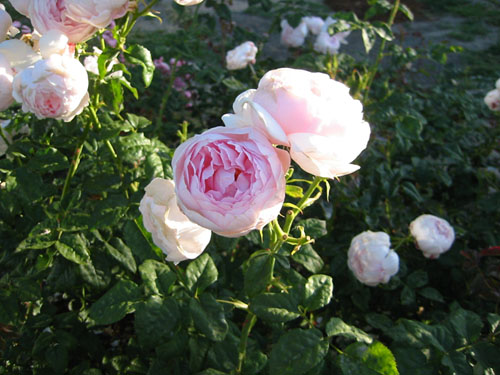
Here's a Queen of Sweden, which was a bit of an impulse purchase. It does make a nice flower, and they stay upright, too. The later blooms have tended to curl up like this instead of opening out all the way.
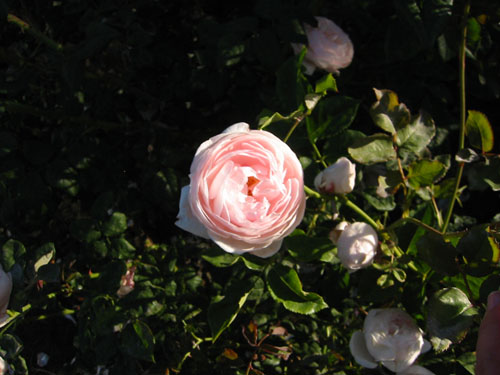
In the front here we have The Fairy, a miniature, and Bonica. Both are quite easy as roses go, with Bonica showing remarkable disease resistance. I'd be tempted to do a whole hedge of Bonica if I didn't have a thing for big cabbagy roses.
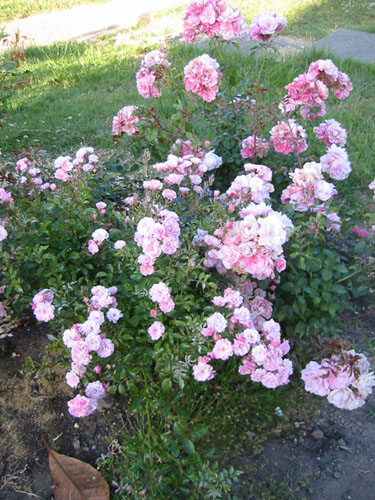
Heritage, David Austin's favourite of his roses, and one of my favourites, as well. I have been thinking I might as well have gone with all Heritage out front, I love it so much.
Come to think of it, this looks an awful lot like what I thought was Sceptr'd Isle, which I might have mismarked. Or the Heritage, since I guess Heritage has the same quartered center as Geoff Hamilton. I should re-check my chart, though, because the way I ended up laying out the beds confuses me.
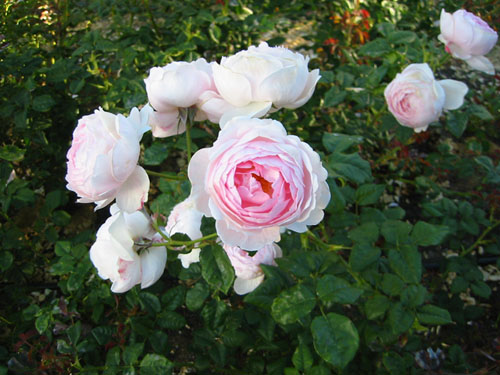
Geoff Hamilton, a more recent Austin introduction, and a lovely flower, if impossibly heavy. They do tend to spend their time sagging at the ground, but you know, it's very pretty.
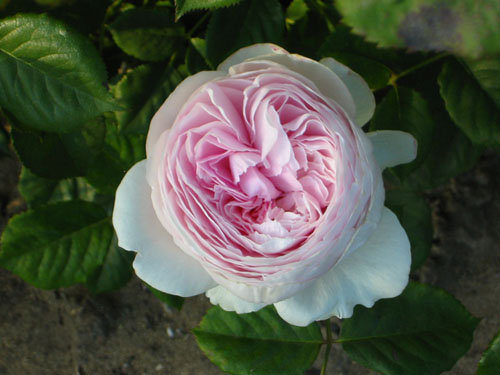
Technorati Tags: david austin, gardening, native plants, roses
posted by ayse on 06/17/06